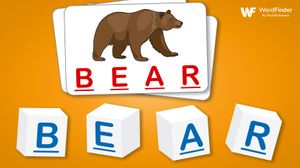On the Edge: Critically Endangered Languages in Top Countries
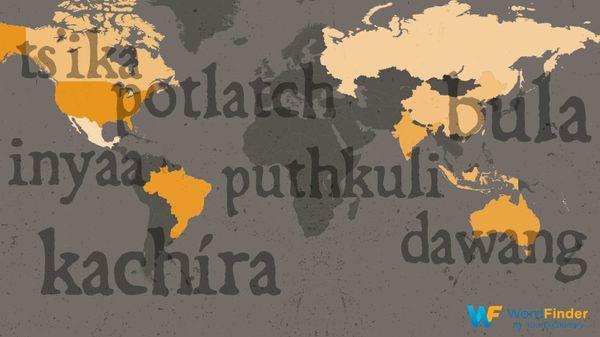
Adapted from Getty Images
UNESCO Endangered Languages
There are an estimated 6,000 languages in the world. The United Nations Educational, Scientific and Cultural Organization (UNESCO) classifies each of them based on their vitality. This ranges from “safe” to “critically endangered,” the latter of which make up almost 10 percent of the world’s languages. Other designations include vulnerable, definitely endangered, severely endangered, and extinct.
UNESCO does not choose the level of endangerment based only on the total number of speakers. It also considers several other factors. These include:
intergenerational language transmission
proportion of speakers within a total population
availability of materials for language education
Beyond the Number of Speakers
Language learning platform Glossika agrees. “A language community with more than 100 speakers today can be considered quite healthy and vivacious, as long as they choose to speak in that language with each other!”
In particular, it’s important to look at how young people communicate with one another. Say a teenager only speaks their native tongue with elders. If that’s the case, they’re unlikely to continue speaking it after older community members pass away. Thus, they’re also unlikely to pass this language on to their own children. Intergenerational transmission of language is a critical determining factor.
This challenge has only been further exacerbated by the COVID-19 pandemic. The elderly are especially vulnerable to the virus and they are often the last remaining speakers of especially endangered languages.
Countries With the Most Critically Endangered Languages
According to UNESCO, there are 608 critically endangered languages around the world. More than half of them are found in just 10 countries.
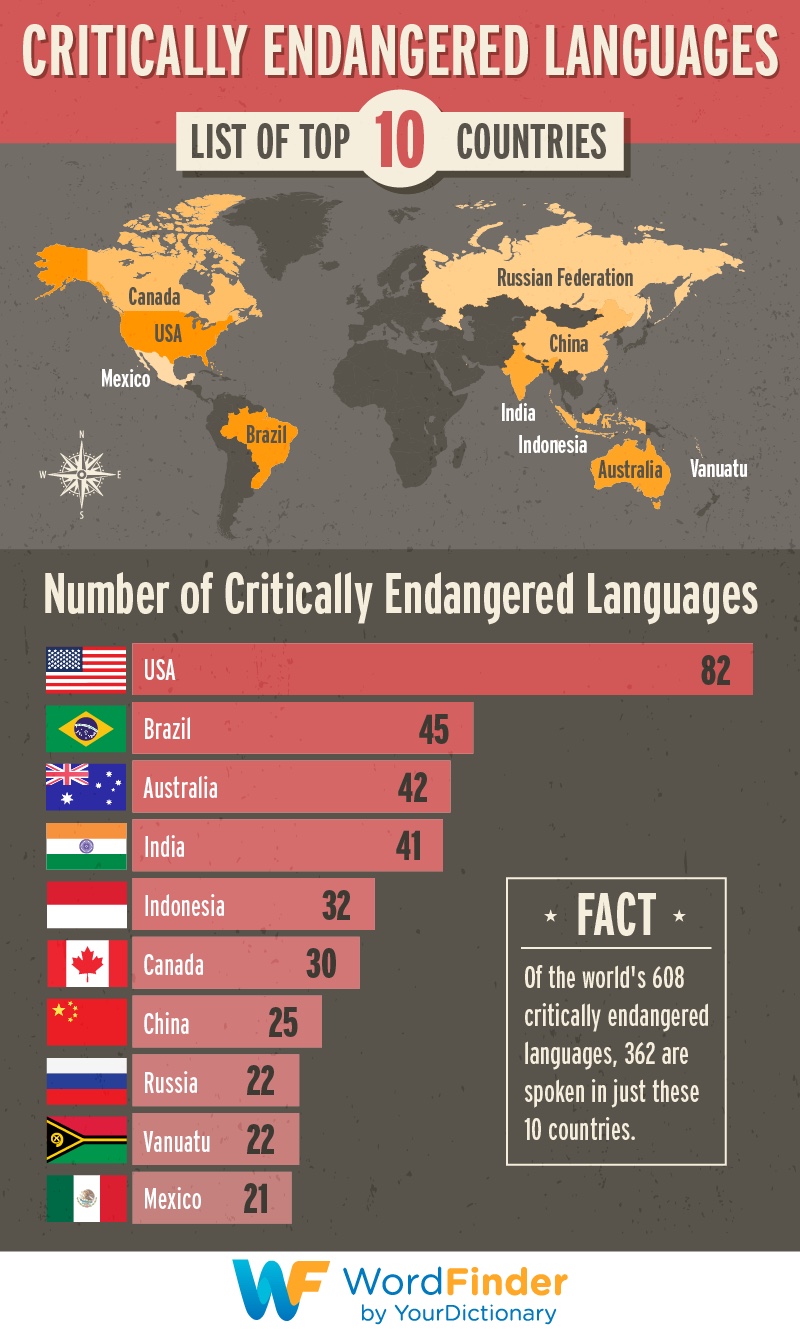
The United States of America tops the list of countries with the greatest number of critically endangered languages with 82. The United States is followed by Brazil (45) and Australia (42). All of these countries are home to diverse Indigenous populations with a great number of local languages.
Rounding out the top 10 are India (41), Indonesia (32), Canada (30), China (25), Russian Federation (22), Vanuatu (22) and Mexico (21). In total, 362 critically endangered languages are spoken in just these 10 countries.
Examples of Critically Endangered Languages
You’ll generally find more endangered languages in larger countries with greater language diversity. If you have a lot of different languages, people still need to communicate across communities. So, many native speakers learn official or more dominant languages. This way, they can speak with neighboring regions and groups. As a result, they use their Indigenous language less and less over time.
The following are examples of critically endangered languages from the top 10 countries listed above.
United States: Chinook Jargon
Region: Pacific Northwest
Native speakers: 650
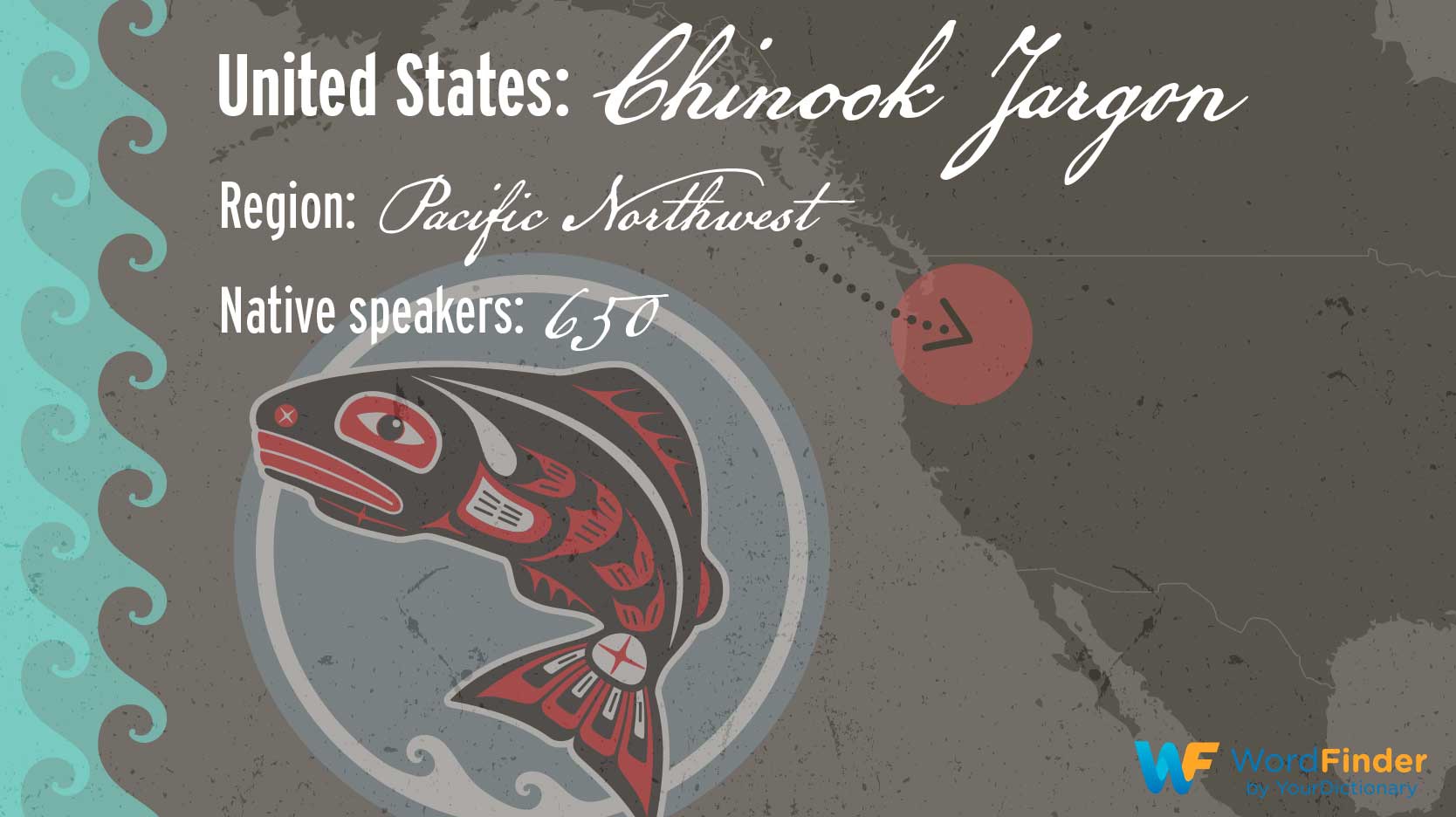
The United States of America is the third largest country in the world, both in land area and population. There are 574 federally recognized tribes living in the US, not including Native Hawaiians, Samoans and Chamorros. Most people speak English or Spanish, so Indigenous languages are not used nearly as much.
Chinook Jargon, also called Chinook Wawa, is a pidgin language in the Pacific Northwest. Its use stretches from Alaska all the way down to northern California. A pidgin language allows groups without a common language to communicate with one another. This simplified language is particularly useful with trade. In this context, travelers and traders throughout the region -- both English-speaking and Indigenous -- spoke Chinook Wawa widely. They used it while exchanging goods, services and ideas.
The language combines multiple elements from dozens of native languages throughout the region as well as European languages. Influences include Haida and Nootka tribal languages, plus English. Chinook Jargon traces its origins as far back to the early fur trade of the late 1700s. It even became a first language or mother tongue for young people growing up in the Pacific Northwest.
About 100,000 people spoke Chinook Jargon in 1875 as part of everyday conversation. It was a merchant language, including such industries as fishing, logging and ranching. The language was declared extinct until it was revived in the 2000s. In 2014, the Chinuk Wawa Dictionary Project published Chinuk Wawa—As Our Elders Teach Us to Speak It. The book attempted to document and revitalize the language, preserving its history.
While the 2010 US census reported that about 650 native speakers remain, only 45 people were noted as speaking Chinook Jargon at home as of 2013. Loan words from Chinook Jargon include chuck (water), potlatch (a type of hosted gathering) and tyee (leader). All three of these words are included in the Scrabble word finder as valid plays. Businesses in the Pacific Northwest sometimes integrate terms into company or product names. The Tyee is the name of an independent news magazine, for example.
Brazil: Tariana
Region: Vaupes River
Native speakers: 100
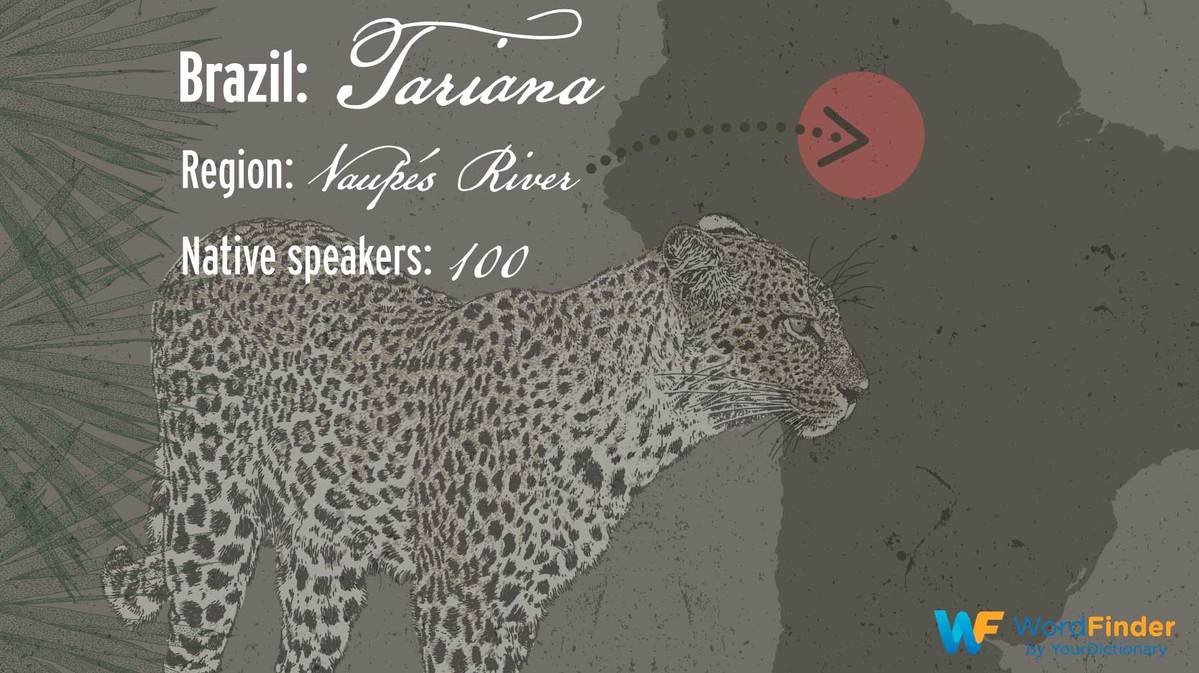
At 8.51 million square kilometers, Brazil is the largest country in South America. Nearly all 209 Brazilians speak Portuguese, the country’s official language. While Brazil is home to some 217 Indigenous languages, fewer than 40,000 people speak any of them. In the past, many natives spoke up to 10 languages to communicate between different communities.
Tariana (also called Tariano) is from the Vaupes River region in northwestern Brazil with a smaller population in neighboring Colombia. Even though about 1,600 people identify as ethnic Tariana, only about 100 speak the language. The Tariana people view themselves as “children of the blood of the thunder.”
Historically, children acquired the Tariana language from their fathers. Modern economic circumstances have led to more fathers leaving home for work. Since the late 19th century, many have switched to the unrelated Tucano language, which is more common in the region. As the Tariana people are exogamous, only marrying outside of their clan or tribe, many Tariana men married Tucano women. Their children subsequently grew up speaking their mother’s language.
Recent efforts are being made to revitalize Tariana. For instance, some schools are teaching it as a second language.
Australia: Miriwoong
Region: Kununurra
Native speakers: 156
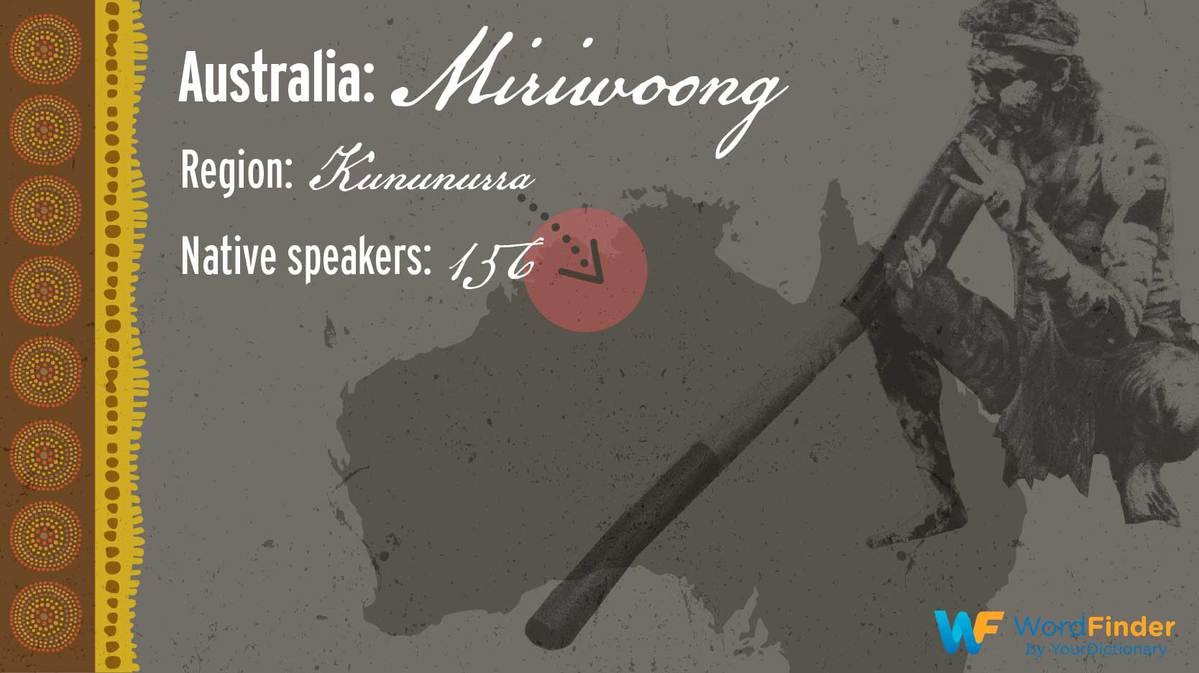
Can you believe there are somewhere between 290 and 363 Australian Aboriginal languages? They’re divided across 28 language families. Unfortunately, a great number of them are on the brink of extinction. The majority of living Aboriginal languages in Australia are found in Western Australia and the Northern Territory.
Miriwoong is one such example from the area near Kununurra in Western Australia. According to the 2016 census, only 156 native speakers remain. Of those, fewer than 20 fluent speakers remain, all elderly. While the language itself is critically endangered, several Miriwoong terms persist. They’ve become part of Kimberley Kriol or Aboriginal English.
Local organizations are making efforts to revive the language among the younger generation. The Mirima Dawang Woorlab-gerring Language and Culture Centre actively records, documents and shares traditional language. The not-for-profit organization runs such programs as the Miriwoong Language Nest and the Miriwoong Knowledge Cycle. Hundreds of children in Kununurra, both of Aboriginal ancestry and not, are learning Miriwoong in school from elders too.
India: Toda
Region: Nilgiri and Kunda Hills
Native speakers: 1,600
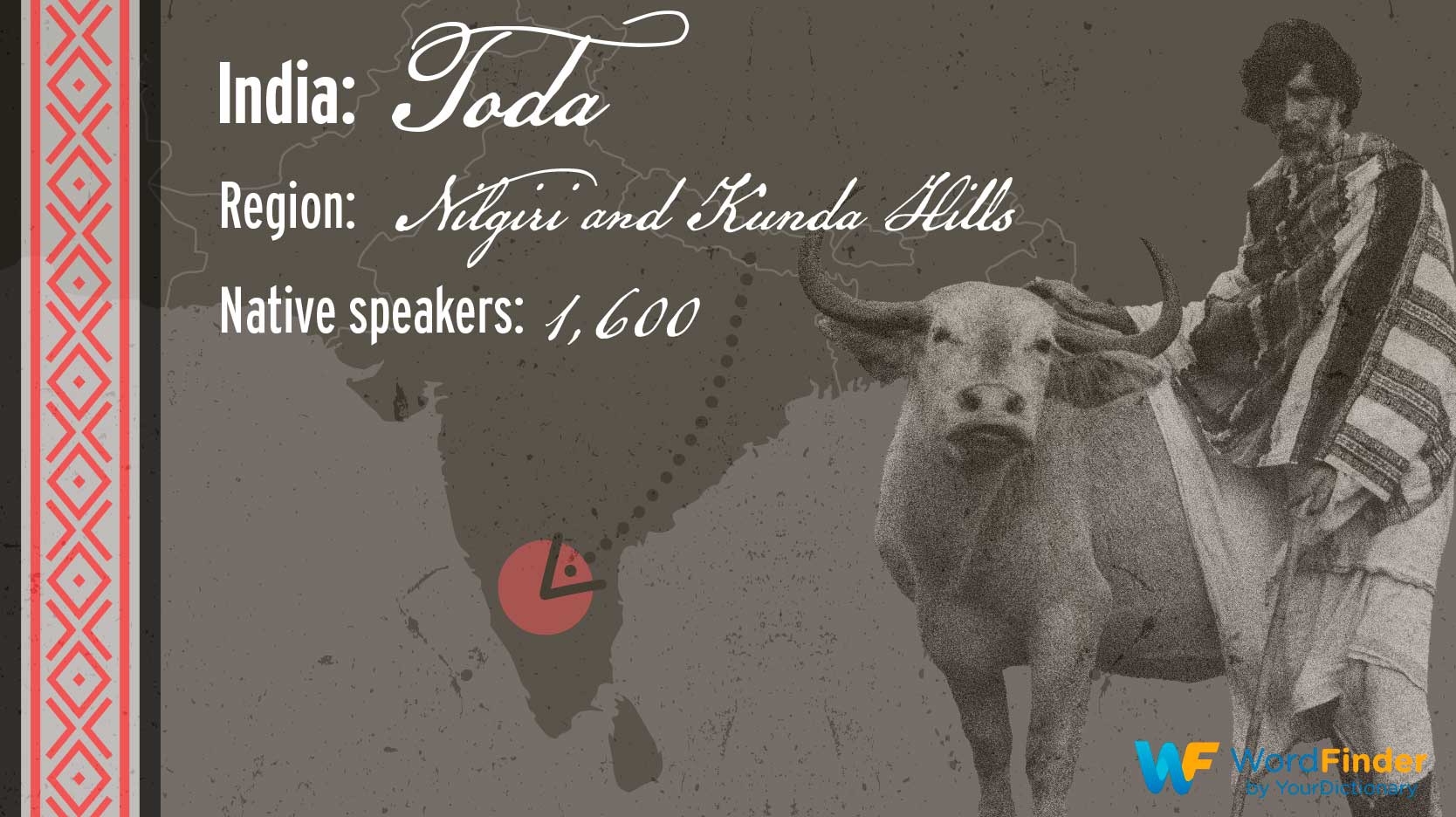
When it comes to languages, India is one of the most diverse countries in the world. Most countries have one or two official languages. India has 23 official languages, including Bengali, English, Urdu and Tamil. What’s more, based on the 2011 census, India has 121 major languages spoken by at least 10,000 people! All said, India may have as many as 1,600 languages. With greater diversity, though, comes greater risk of less common languages fading away.
Approximately 1,600 people in the Nilgiri and Kunda Hills in southern India speak Toda. It’s also called Todi or Tuda. The written form of the South Dravidian language uses a version of the Tamil alphabet. Spoken Toda features several unique phonemes not spoken in neighboring languages. This includes /y/ (like the “u” in the French “tu”) and /æː/ (like the “a” in “cat”). These sounds explain why Toda sounds so different from other languages in southern India.
Examples of Toda vocabulary words include it (flour), ofil (puffed rice) and ofy (breath). Agriculture is the primary industry, including cash crop cultivation and the raising of water buffalo. The Toda people have a powerful relationship with their natural surroundings. This is reflected in Toda embroidery, like puthkuli shawls worn by both genders. Traditionally, Toda people live in barrel-shaped huts made of wood, bamboo, rattan and grass.
India’s Ministry of Education instituted the Scheme for Protection and Preservation of Endangered Languages (SPPEL) in 2013. Monitored by the Central Institute of Indian Languages (CIIL), SPPEL is currently attempting to document Toda grammar and basic core vocabulary. This includes work on a Toda English-Tamil dictionary and an ethnolinguistics profile.
Indonesia: Lolak
Region: Northeastern Sulawesi
Native speakers: <50
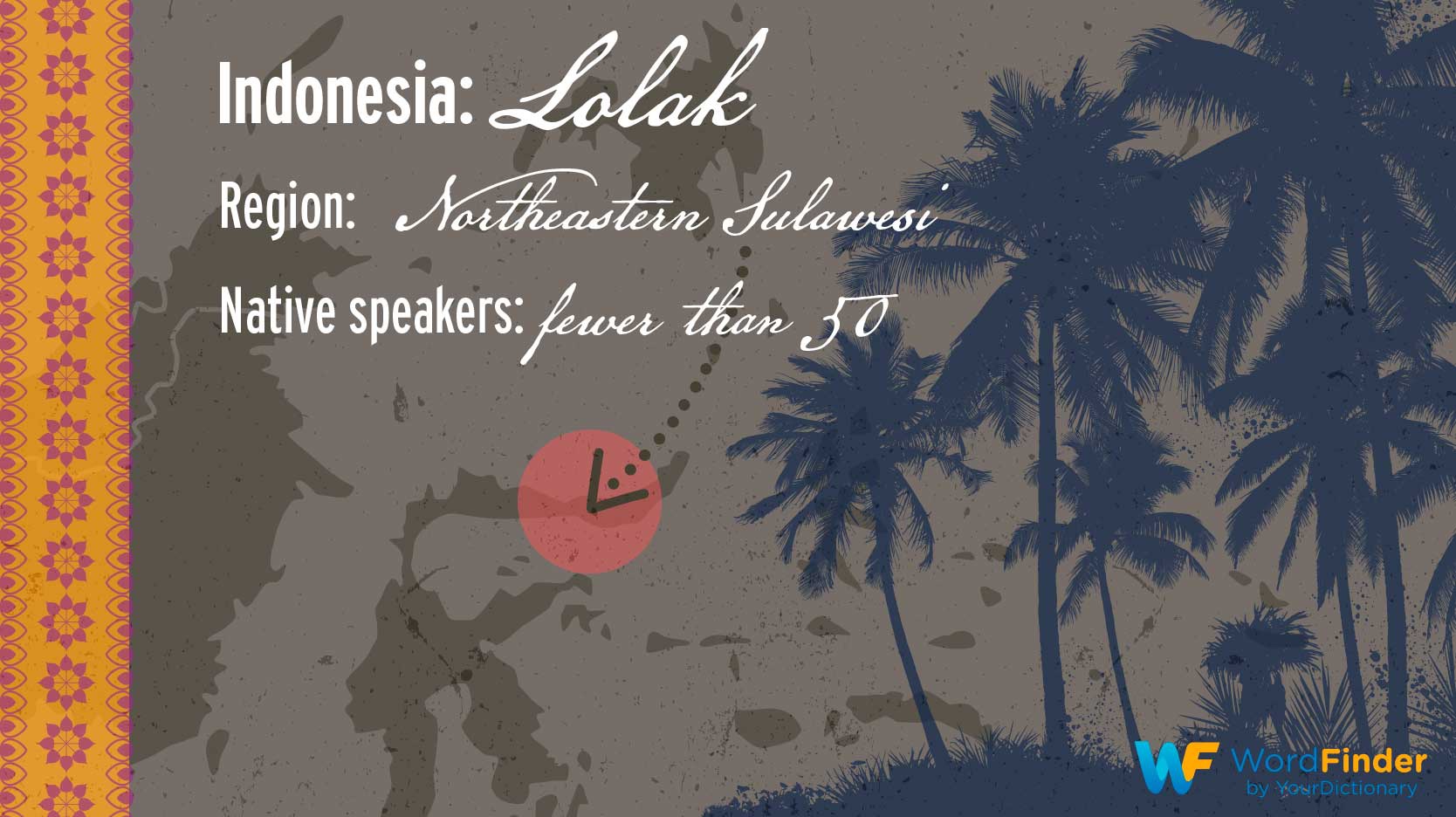
When communities live in relative isolation, they develop their own unique languages. In the case of Indonesia, the largest archipelago in the world, the country consists of 17,508 islands. People inhabit only about a third of these. The country is home to over 700 living languages. That makes Indonesia the second most linguistically diverse country after Papua New Guinea.
Lolak is the name of the language spoken by the Lolak people. They live in the Lolak district in the northern part of Sulawesi island. The Lolak language belongs to the Greater Central Philippine group of languages, which also includes Tagalog and Cebuano. Most Lolak people are Sunni Muslim and work as farmers, growing rice, coconuts, corn, cacao and cattle. They trace their ancestry bilaterally, from both the mother and father.
While some 21,000 people live in the village of Lolak, fewer than 50 native speakers of the language remain. The language was once spoken in the nearby communities of Mongkoinit and Motabang too. The more numerous Mongondow people surround the Lolak homeland. So, Lolak speakers learn Mongondow as a second language for pragmatic reasons.
Some example Lolak terms include baa (forehead), bula (moon) and ubi (sweet potato). Checking our Words With Friends helper, of these three words, only baa is a valid play.
Canada: Tsuut’ina
Region: Southwest Alberta
Native speakers: 80
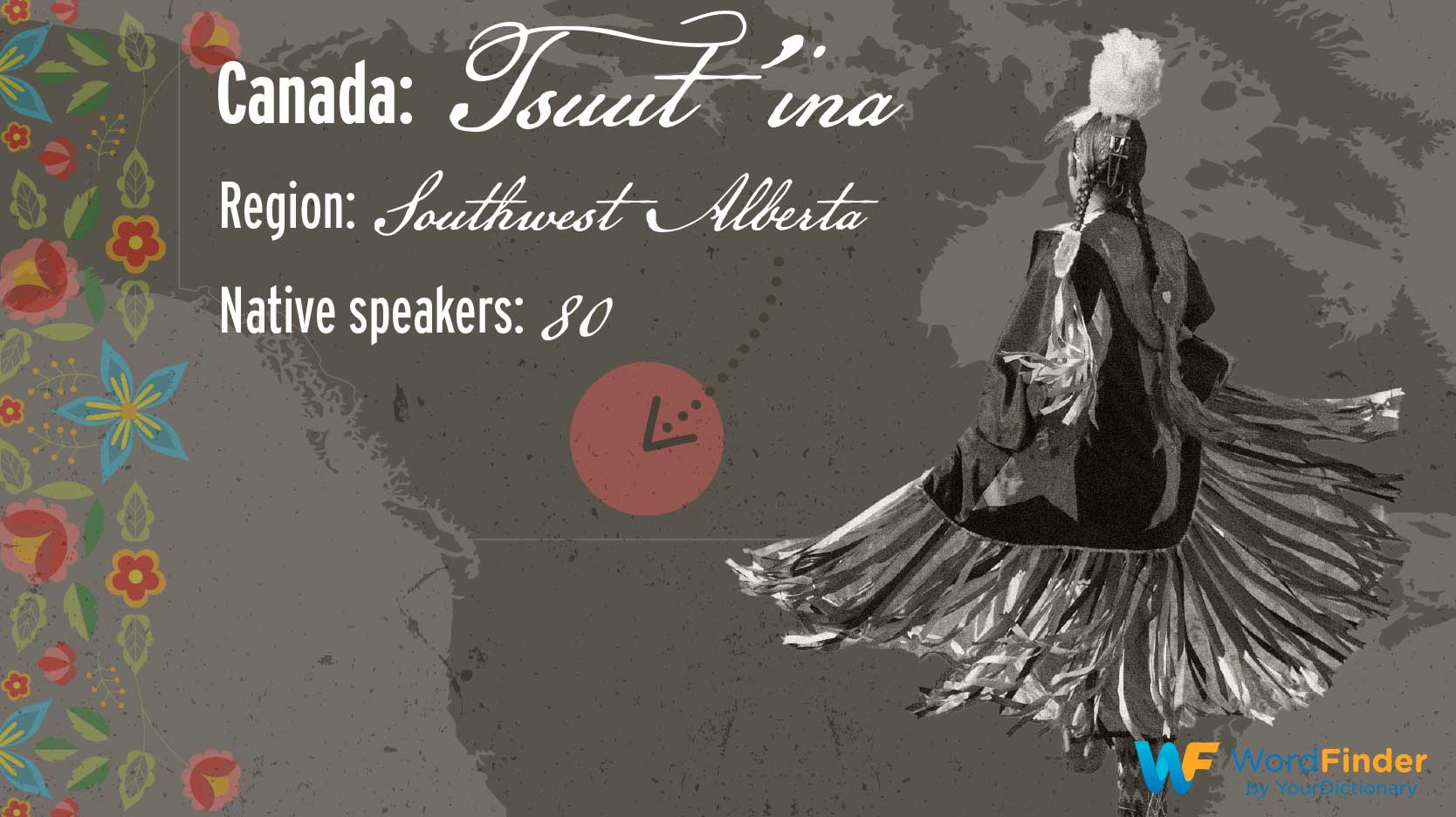
Canada’s troubled history with residential schools has no doubt contributed to the endangerment of numerous Indigenous languages. For decades, Indigenous children were removed from their families and placed into residential schools. There, they were punished for speaking their native languages.
Many of the most endangered languages in Canada are spoken by the Indigenous peoples of British Columbia, both on the mainland and on the numerous islands along the country’s west coast. These include Bella Coola, Southern Haida and Tlingit. Some of these languages are shared with Indigenous peoples in modern day Washington and Oregon as well, including Chinook Jargon.
On the other side of the Rocky Mountains, near the southwest city limits of Calgary, Alberta, is the Tsuu T’ina Nation 145 Reserve. This 283 square kilometer reserve is the only territory where you’ll hear the Tsuut’ina language (Tsuut’ina is written both as one word and two). Even though an estimated 2,089 Tsuut’ina people live on the reserve, only 80 native speakers of the language remain as of the 2016 census. Tsuut’ina belongs to the same Athabaskan language family as Navajo and Chiricahua.
Some common words in Tsuut’ina include dina (man), ts’ika (woman), xani (buffalo) and zos (snow). Tsuut’ina itself literally translates from Athabascan as “a great number of people.” Like other Indigenous people who lived on the plains, the Tsuut’ina place great importance on the buffalo. The animal is a source of shelter, clothing, food and tools.
China: Fuyu Kyrgyz
Region: Fuyu County, Heilongjiang Province
Native speakers: 10
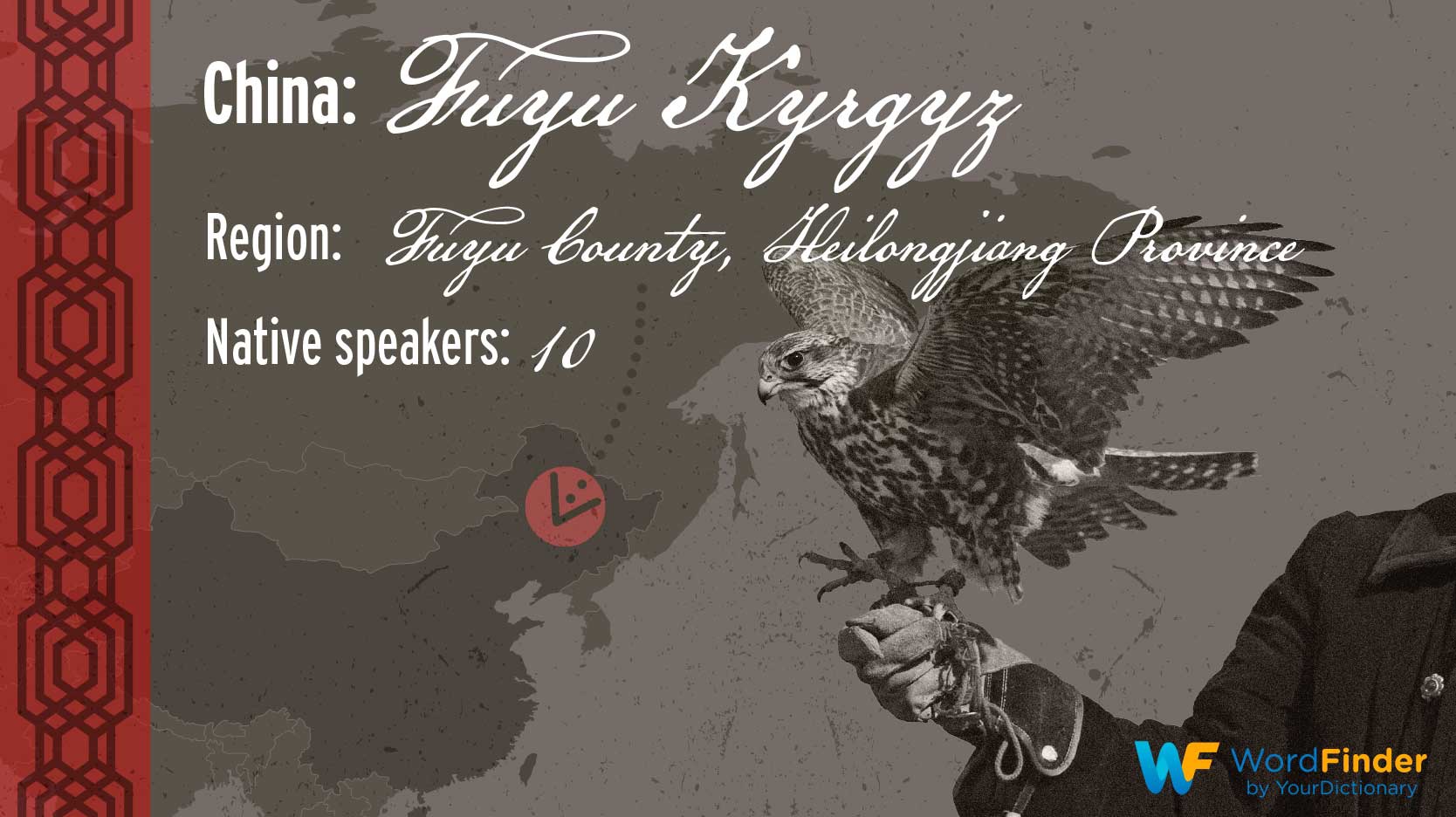
Mandarin, or “Standard Chinese,” is the official dialect in China. More than 70 percent of the Chinese population speaks Mandarin, though significant populations also speak Yue (Cantonese) and Wu (Shanghainese). Local dialects are used less and less, especially in schools, business and other official settings.
In the northernmost province of Heilongjiang, in and around Fuyu County, live the Kyrgyz people. Given their location, the Turkic ethnic group shares cultural influences from Mongolia and Russia. This is the same “Kyrgyz” as that of nearby Kyrgyzstan, a former Soviet Republic. However, the Fuyu Kyrgyz language is actually closer to Khakas, a language spoken in Khakassia, a federal subject of Russia.
The Fuyu Kyrgyz people originate from Yenisey in central Siberia. The Dzungar khanate forcibly relocated them to Dzungaria in Northwest China around 1703. After the Qing defeated the Dzungars in 1761, they deported the Kyrgyz to the Nonni river basin in Manchuria. Modern day Fuyu Kyrgyz people trace their ancestry to this original group.
Only an estimated 10 native speakers of Fuyu Kyrgyz (also called Manchurian Kirghiz) are left today. They’re mostly passive speakers, not using it as part of their regular daily discourse. Even though many adults still spoke Fuyu Kyrgyz in 1980, many have switched to a local dialect of Mongolian. Children learn Standard Chinese in school.
Russian Federation: Ter Sami
Region: Kola Peninsula
Native speakers: 2
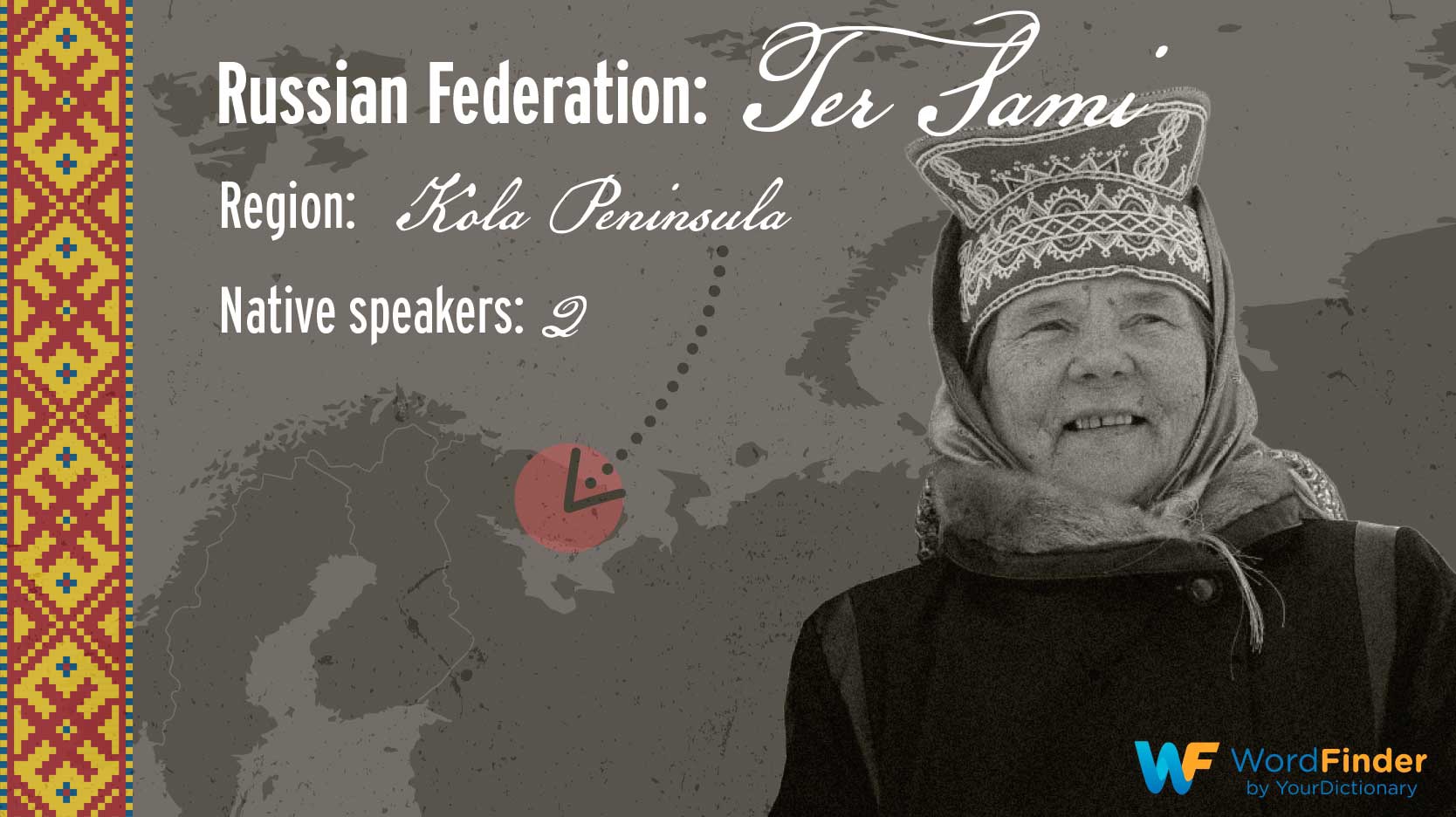
In very large nations like the United States and Australia, Indigenous languages tend to give way to more dominant or official languages. Russia is much the same. Part of the rapid decline in local languages in Russia can be attributed to the Soviet collectivism of the 1930s. The government prohibited native languages from being spoken in schools and homes.
The Sami languages (also spelled Saami) are spoken by the Sami people in Northern Europe. In addition to people in Finland, Norway and Sweden, this also includes a minority population on Russia’s Kola Peninsula. Sami languages are most closely related to Balto-Finnic languages in Finland and Estonia. As a whole, Sami has no official status and no formal recognition as a minority language in Russia.
More specifically, Ter Sami is the easternmost of the Sami languages and it is on the verge of extinction, if it isn’t already extinct. As of 2010, just two elderly persons spoke Ter Sami. It is unclear whether they are still alive in 2021.
The rest of the approximately 100 ethnic Ter Sami speak Russian. Contrast this with the six Ter Semi villages with several hundred people in the late 1800s. With no standardized orthography and no educational materials, Ter Sami would be very difficult to revitalize. A spelling system with the Cyrillic alphabet exists, but with nearly no one left to teach it.
Vanuatu: Mwesen
Region: Vanua Lava
Native speakers: 10
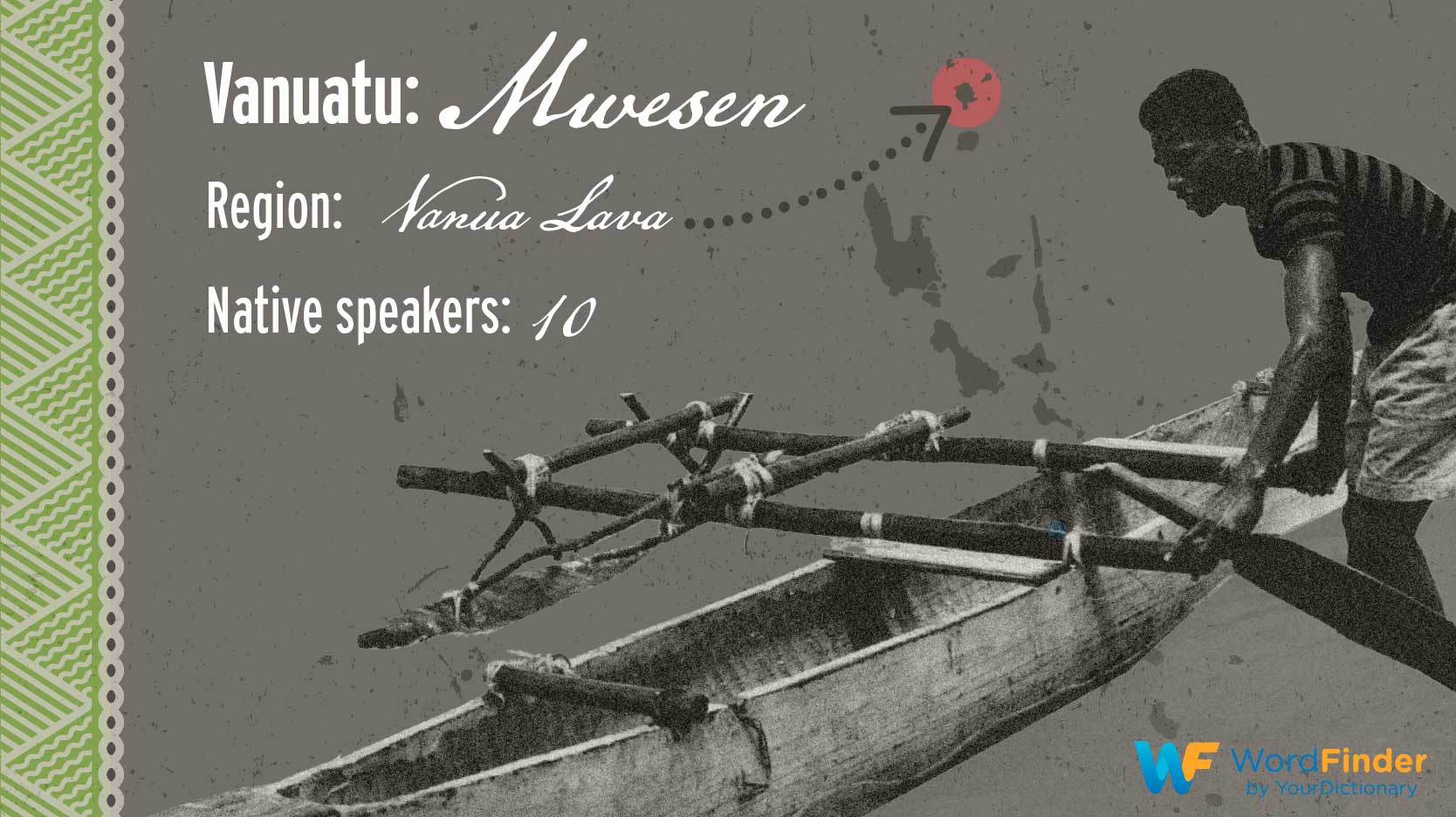
Vanuatu is perhaps the most surprising entry in this list of countries with the most critically endangered languages. It’s not a vast land with a clearly dominant language like Russia or Canada. Instead, the South Pacific nation consists of about 80 islands, located about 2,000 kilometers off the eastern coast of Australia. It is home to over 100 distinct languages.
Four Indigenous languages are spoken on the island of Vanua Lava in Torba Province. Among the approximately 2,600 inhabitants of the 314 square kilometer island, about 2,000 speak Vures, followed by 500 who speak Vera’a. Mwesen, with just 10 speakers remaining, is critically endangered. While Mwesen shares some similarities with Vures, they are distinct in their vowel systems, noun articles and pronoun paradigms.
On the website of linguist Alexandre Francois, you can listen to an audio recording in Mwesen. Chief Tevet (David) Mesigteltok tells the legend of Kpwet the Trickster God. It is the most famous legend of North Vanuatu. Coping with his 11 mischievous brothers, the demigod Kpwet must fight an ogre named Wokpwastavav.
Mexico: Kiliwa
Region: Baja California
Native speakers: 3
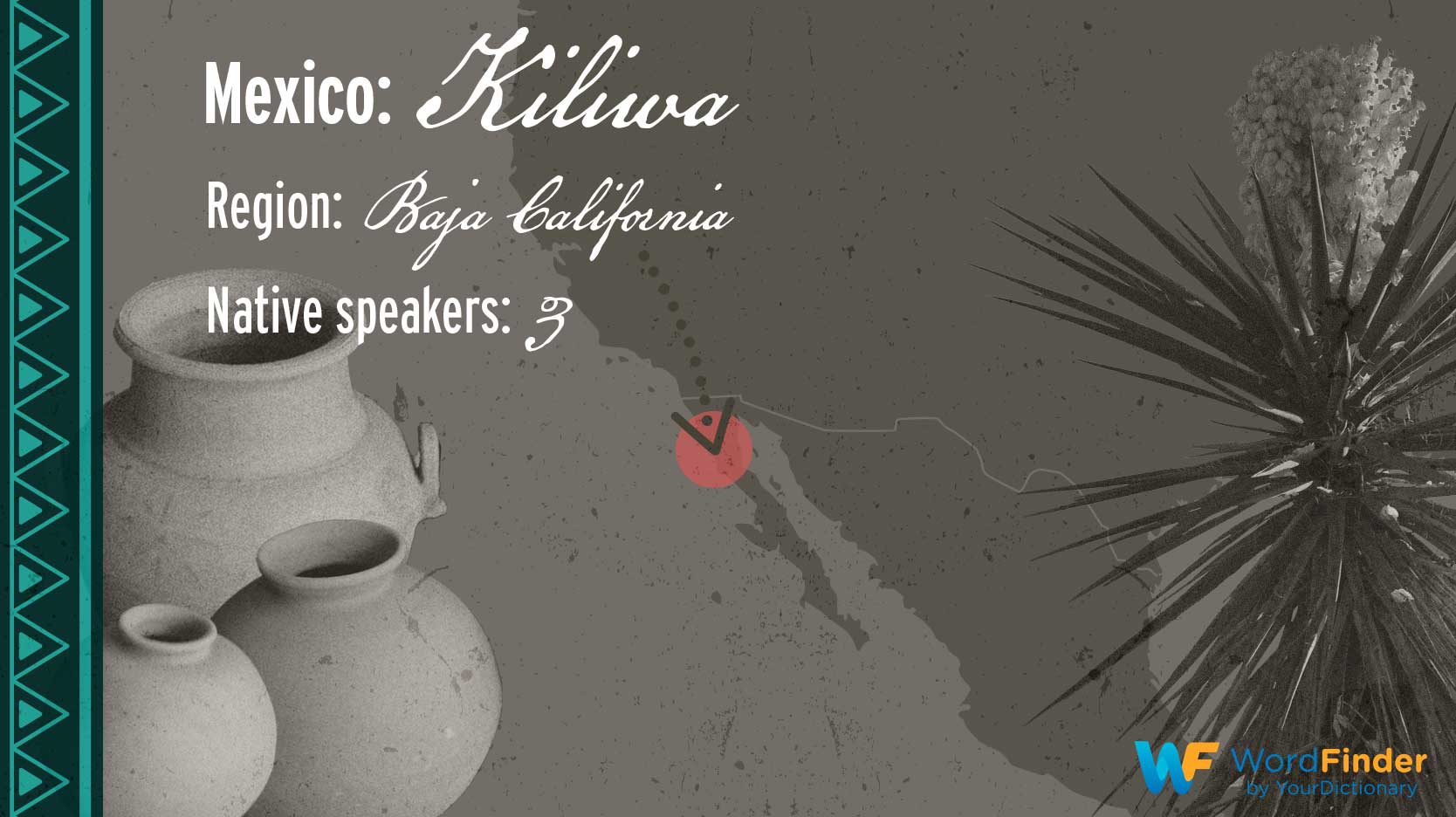
The Kiliwa are an Indigenous people who live in northern Baja California, south of the American state of California. Their language dates back two or three thousand years. Even though the native community universally spoke Kiliwa in the mid-1900s as a first language, a 2000 census revealed that only 52 speakers remained. That number has dwindled down to just three native speakers as of 2019. They all live in Arroyo de Leon in Ensenada.
Even though so few people can still speak Kiliwa, it is recognized as a national language in Mexico. Most of the 50 or so remaining Kiliwa people speak the related language of Paipai. Mauricio J. Mixco published studies of Kiliwa syntax and a Kiliwa dictionary in 1985.
There is also a free illustrated dictionary, in Spanish, by Ensenada chronicler Arnulfo Estrada Ramirez and 84-year-old Kiliwa teacher Leonor Farldow Espinoza. The latter has also translated several Kiliwa stories into Spanish.
Kiliwa is one of approximately 12 Yuman languages, most of which are also threatened. Yuman languages stretch from Baja California and northern Sonora in Mexico to southern California and western Arizona in the United States.
Endangered Languages, Endangered Culture
Many projects are currently underway all around the world to revive threatened and endangered languages. The Living Archive of Aboriginal Languages, for example, collects endangered literature in Indigenous languages from Australia’s Northern Territory. The nehiyawak Language Experience in Saskatchewan, Canada seeks to “reclaim, restore and relearn the Cree language and its link to identity.”
The preservation of critically endangered languages isn’t just about vocabulary and pronunciation. Language can capture the culture of a people. It describes their unique way of seeing the world around them. As Anastasia Riehl of Sapiens writes, “Languages are a vital source of culture and identity for individual communities.”
In a rapidly shrinking world, smaller communities and traditional ways of life can get lost in the mix. Only through their preservation, study and revitalization can these important stories survive for future generations..
Michael Kwan is a professional writer and editor with over 15 years of experience. Fueled by caffeine and WiFi, he's no stranger to word games and dad jokes.


